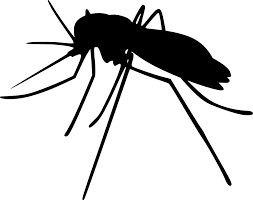Triple E: Know the risk

Triple E is contracted by a bite of an infected mosquito.
October 24, 2019
Eastern Equine Encephalitis, also called Triple E or EEE, is a disease that is transmitted from the bite of infected mosquitoes.
According to the Center for Disease Control and Prevention, “Persons over age 50 and under age 15 seem to be at greatest risk for developing severe disease when infected with EEEV.”
EEEV is Eastern Equine Encephalitis Virus, which is what causes EEE. “Overall, only about 4-5% of human EEEV infections result in EEE,” according to the CDC.
Often, most people infected with the virus will not develop any symptoms from it, and a mild form of the illness, known as systemic infection, may resemble the flu.
About 5% of people who become infected may develop an extremely rare and potentially life-threatening infection that can cause swelling and inflammation of the brain.
You can lower the risk of getting EEE if you prevent being bitten by a mosquito. Wear insect repellent, such as bug spray with deet in it. It is also recommended that you wear long sleeves and long pants.
EEE is dangerous. Approximently 30% of people who get Triple E die, and almost all who survive have lasting neurological problems.
Symptoms that people usually have when someone has contracted the EEE are, “fever, headache, irritability, restlessness, drowsiness, anorexia, vomiting, diarrhea, cyanosis, convulsions, and coma.”
According to the CDC, death will often occur two to ten days after symptoms start occuring.
Of those who survive, they are often left with dangerous disabling mental and physical conditions, “Which can range from minimal brain dysfunction to severe intellectual impairment, personality disorders, seizures, paralysis, and cranial nerve dysfunction,” according to the CDC.
EEE infects animals when they’re bitten by mosquitos. Binder Park Zoo, for example, has had at least two Mexican grey wolf pups die after contracting EEE. The disease has also been infecting many of the deer in Michigan.
The Michigan Department of Natural Resources, the DNR, warns people to be careful with the deer carcasses, “Wear gloves when field dressing and avoid touching the brain, spinal column or spinal fluid. That’s where the virus is housed.”
In Michigan as of October 11th, 2019, 11 people have been infected, and 39 animals.
According to Michigan Emerging Disease Issues, there have been four people who have died from EEE within Michigan from this recent outbreak.
With the worry about EEE schools around Michigan, including Kalamazoo Public Schools, have moved the times that outdoor games start. The Loy Norrix homecoming game now will start at 4:30 pm, instead of 7 pm.
Many students don’t like that those games, especially the homecoming game, has been moved up because it also will move when the homecoming dance is. The dance will be after the game: it will be much earlier than it would’ve been normally and end much earlier. Loy Norrix also had to cancel the homecoming parade which many students are upset about.
Junior Carson Williams said, “The mosquitoes are mostly dead. I get it when the issue first started, but not anymore.” She feels that it’s not as fun to have the game during the day.
While there is still a risk of an EEE infection, the risk is lowered significantly once Michigan has its first hard frost, which is most likely to occur between October 13-20. When the first frost occurs the mosquitoes usually are killed off.
So within the next few weeks, the threat of getting EEE is significantly lower.












